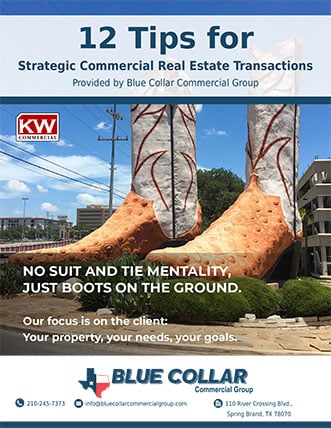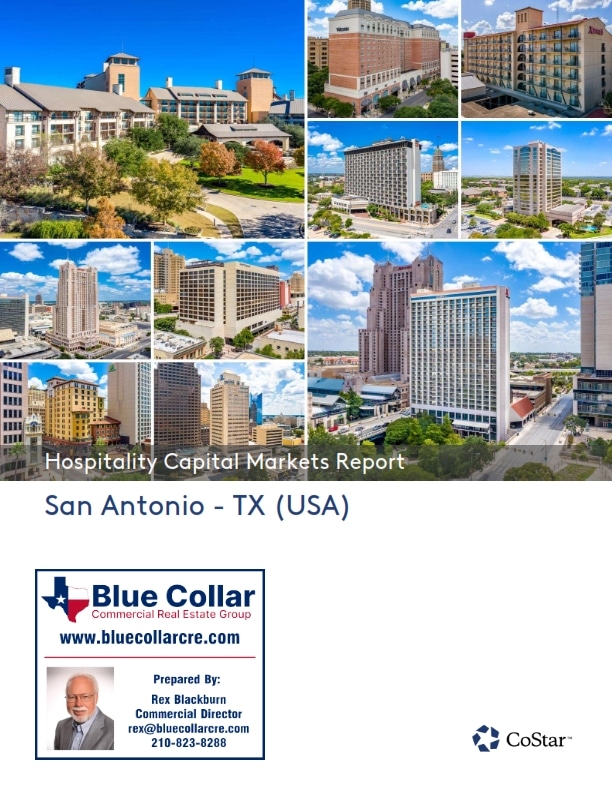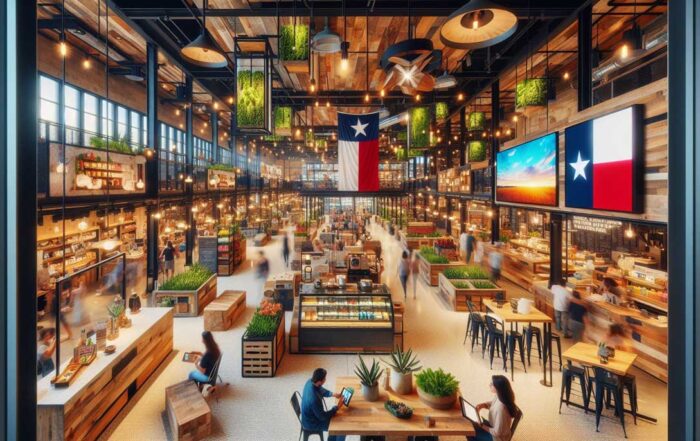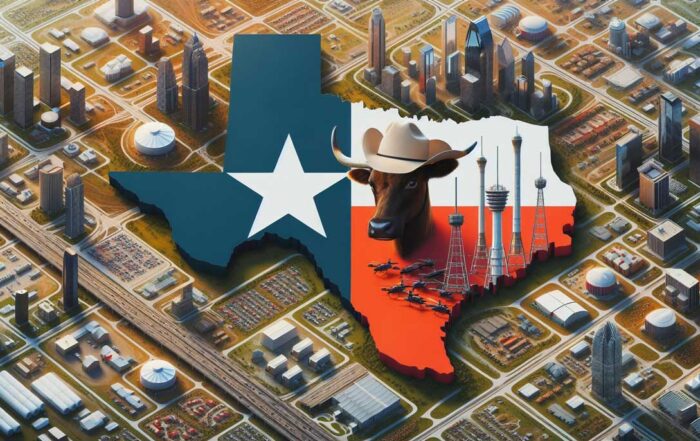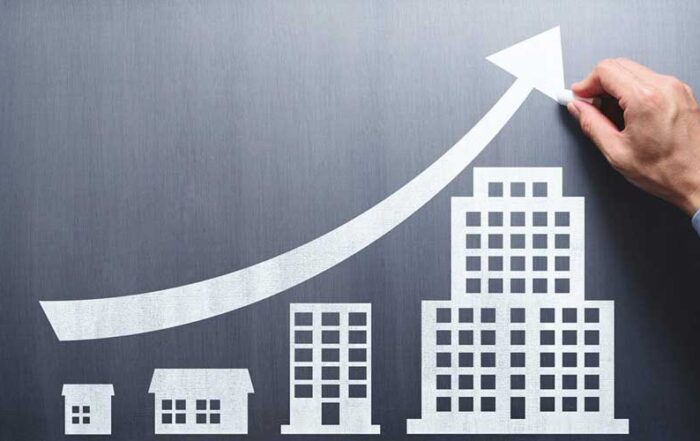This article recaps the three top metrics in the RV park industry: CAP rate, cash-on-cash, and cashflow. Analyzing those three ratios can help you decide if this is something you want to invest in or not.
I was super pumped to read that in the RV park industry, the goal of most buyers is to attain 20% cash-on-cash return. If I put down $100,000 on an RV park, a 20% cash-on-cash return means I would get $20,000 per year back. This is phenomenal when you consider that putting the same money in a CD down at Charles Schwab would yield someone about a point and a half, or roughly $1,500 a year. But if one went the RV Park route, one’d be getting $20,000. What an exciting way to build financial security.
I’d love to explore this avenue with you. So please don’t hesitate to reach out. Please enjoy reading more below!
Kindly,
Kaitie Moore Underwood
REALTOR®, Residential & Commercial
737-203-4178
Episode 2: RV Park Rates of Return Explained Transcript
By: Frank Rolfe
A CAP rate is not the price on a hat. This is Frank Rolfe for the RV Park Mastery podcast series. We’re going to be talking today about the different rates of return on an RV park, what they mean, and what you can estimate they would probably be.
Let’s start off with the CAP rate. Now, CAP rate is a slang term for capitalization rate. That’s simply a fraction. It’s the net income of the property, on the top of the fraction, over the cost of the property, on the bottom of the fraction. You divide the top by the bottom, and that gives you a number. And if you’re buying an RV park, or any property for that matter, the higher that number is, the better. So a five cap is always inferior to a nine cap, and a nine cap is inferior to a 12 cap. In fact, you can never be too high when it comes to CAP rates. But that’s what a CAP rate represents. It’s just the net income from the property divided by the price of the property.
So you might say, “Well, why is that important? Why should I care?” Well, you should care a lot, because a CAP rate has a lot to do with how your property will perform. The big item in RV parks, mobile home parks, every other kind of real estate is the thing called the “spread” between the CAP rate and the interest rate. And the bigger that spread, the higher your return level will be. So if you’re buying a property that has a CAP rate of eight and an interest rate on the loan of five, you have a three-point spread. And again, when you’re buying an RV park, the bigger that spread, the better. And in fact, you can never have a spread that’s too big.
Now, what are the typical RV park CAP rates out there? Well, RV park CAP rates are going to typically be found to be roughly about 8% for a really, really nice property that has a great reputation in an amazing location. Probably the average in the U.S. is going to be more along the lines of 10 and 12%, and then on properties that need a lot of work, in turnaround mode, lesser locations, you’re probably going to be up there maybe even into the mid-teens.
Now, there’s two kinds of locations in the world of RV parks. You have overnighter, where people just park as they’re going down the highway on their way to somewhere else, and then destination, where people want to stay. And you’ll also see differences in CAP rates based on whether you’re an overnighter or destination type of RV park. The destination is more valuable. The destination is more desirable. Hence, the destination will have probably a lower CAP rate than the overnighter, but despite that, that’s probably what you’re after. So if we were on a game show, trying to guess, “Here’s a good, solid destination RV park in America. What would the CAP rate be?” I would probably guess around 10%. I think 10% is a very fair price. It lets the seller get a good price for their sale, but also allows the buyer to buy something that can make real money.
Now, let’s move on to cash-on-cash return. We talked a minute ago about spread and the importance of spread, but the main thing the spread ties back to is your cash-on-cash return, and what is that? That tells you how much money you will get back from your down payment. You put in X dollars of cash, how much can you be expected to get back from those X dollars of cash? And in the RV park industry, the goal of most buyers is to attain 20% cash-on-cash return. So at 20% cash-on-cash return, what does that mean? Well, what it means is, if I put down $100,000 on my RV park, a 20% cash-on-cash return means I would get $20,000 per year back out. Pretty amazingly good, when you consider if I put that same money in a CD down at Charles Schwab, I might get about a point and a half, or roughly $1,500 a year. But with the RV park, I’m getting $20,000. So it’s a big number. It’s the kind of number, you could actually build financial security from that.
So cash-on-cash return in the industry is predicated on the level of that spread. Now, what are the things that harm your cash-on-cash return? Well, one thing that really kills a lot of RV park buyers are, number one, they don’t budget properly, so they don’t really know what the net income will be when they’re buying. But another item is when they cheat themselves by not taking into account all of the capital improvements necessary to get the RV park in good operation, and putting that into the bottom part of that fraction, going back to CAP rate.
So if I have a CAP rate, and I’m estimating that based on a property at a price I’m paying, but then I’m going to pour in $200,000 of additional capital to fix the roads, to fix the pool, to bring it back to life, I’m not buying it for the price that the seller is asking. I’m buying it for the price the seller’s asking plus $200,000. That can massively impact your CAP rate, and once you do that, it massively impacts your spread, which impacts your cash-on-cash return.
So always be sure, when you’re trying to come up with these various levels of return on your investment, that you be honest with yourself. I like to tell people, I think the most important thing you can do when you’re looking to buy an RV park is to wear, mentally, a white lab coat. Don’t take things based on emotion. Look at them factually. Imagine a drug company that’s trying to test a new medicine. They want it to work so desperately bad, because they need that product to bolster their sales. They want to have a product, they want to believe they can beat cancer, but they can’t let that emotion get into the actual scientific analysis of success. Because if they’re wrong, people might get injured. If they’re wrong, then people won’t be cured.
And no different than that with an RV park. You have to look at it without any passion at all. You have to look at the numbers and say, “Okay, what do these numbers say?” and embrace those and be honest with them. A lot of times, when people get in trouble with CAP rates and cash-on-cash returns, they violated that rule. They told their friends, “Hey, I’m buying this RV park,” or more importantly, they told themselves, “Hey, I’m buying this RV park.” And then when the numbers say you shouldn’t buy the RV park, or that you should at least try and get a price reduction, they can’t. They just can’t do it, because they have morally, emotionally, already committed to the deal, and that’s the worst thing you can possibly do.
All right, so cash-on-cash return. Again, you want to get about a three point spread between interest rate and CAP rate, and that will get you about a 20% cash-on-cash return. Now, is there a level at which cash-on-cash return is so unattractive, you would not buy the RV park? That’s all up to you. There’s no banking regulation, there’s no U.S. law that says that you have to do X, Y, or Z when it comes to buying an RV park, or any real estate, for that matter. But for most people, what they’re seeking is that lauded 20% return, with the potential to go even higher. I think if you look at how you can really build wealth in America today, how you can really build financial security and a significant income stream, 20% is the magic number. That number is so much higher than anything else out there. It makes the effort worth it, because you’re not going to get 20% in any other form of investment.
And let me also throw out, because I see the headlines, as you do, and let me just burst the bubble here on this whole idea of the stock market going to be the engine of making 20% going forward. I’m an old economics major from Stanford, and I can tell you, and you can look it up easily online, the stock market since inception has never done better than a long-term average of 10%. So when it goes up 20 or 30%, that means it is going to drop 20 or 30% to go back to its consistent 10% level. We have not ever going to be able to defy the laws of economics and gravity. And the way the market works is, you have high peaks, then you have collapsing valleys which bring you back to 10%. So when I’m talking a 20% cash-on-cash return, I’m talking one that happens every year, like clockwork, going forward. I’m not talking about one where you hit 20% one year, and then you’re negative 14% the next. That’s not the kind of investing that I or anyone would advocate.
Now, let’s move on to cashflow. Now, what is cashflow? Well, cashflow is a little different than cash-on-cash return, and you need to know this so you don’t confuse the two. Cash-on-cash return is the amount of money you get back from your down payment, but you don’t always get that up front, because the principle portion you pay down on your note counts as cash to you. It’s also known, though, as enforced savings, because you don’t get that until the end of the loan. You don’t get that until you refinance the loan. So as a result, you’re not seeing that in your pocket.
So there’s another term that was defined to show what you get in your pocket, and that is called cashflow. So what is cashflow? Cashflow is basically the revenue of the RV park minus the operating expenses, and then you also have to additionally take out your mortgage payment, both the interest and principal. Now, the interest is money you would never get back, but the principal you would, in the cash-on-cash metric. So what you’re doing with cashflow is, you’re additionally subtracting the principal portion on the mortgage. So your cashflow will always be lower than your cash-on-cash return.
How much lower? Well, it all depends on what you’re doing as far as how fast you’re amortizing the debt on the RV park. If you’re amortizing debt on, say, a 30-year amortization, which means you pay the debt off in 30 years, you will have much less capital that’s paid back on the loan each year than if you’re doing it on a 15 or a 10. But the cash really is, in many ways, what you see right now most immediately in your pocket.
Now, RV parks have one extra trick, which is that for many RV park buyers, they self-manage. As a result, the management cost in the numbers of the RV park, those also flow back to the owner. So they already have one built-in significant cashflow coming in, and that’s, if they self manage, they get the money that would typically go to the manager. But the other thing about cashflow to remember is, if you buy any old RV park that’s stabilized, and it can cover its note with principal and interest, a lot of your cashflow will stem from you doing a better job of operations, from you filling those vacant lots, from you doing a better job of making money on every dollar that comes in the door.
So, often, cashflow is a reward given to you, it’s the carrot that is dangled before you to do a better job than mom and pop did. When you bolster that occupancy, when you keep costs low, these all have big rewards in form of cashflow. In fact, many people look at cashflow kind of as that daily driver for them working harder, because they get immediate gratification. Every time they open the cash register, the money that they’re taking in beyond the initial budget of when they bought the RV park, that flows straight to them. So the cashflow is basically kind of like a daily Christmas present based on how you do.
So those are basically the three top metrics in the RV park industry. CAP rate, cash-on-cash, and cashflow. And as you can see, they’re all very, very interrelated. So it’s very, very important, on every deal that you do, you analyze those three ratios to decide if this is something you want to invest in or not.
This is Frank Rolfe for the RV Park Mastery podcast series. Hope you enjoyed this. Be back again soon.
Your Partners in Commercial Real Estate Success
At Blue Collar Commercial Group, we don’t just work in the Texas Hill Country commercial market—we live here. Our deep-rooted understanding of this unique market, combined with our unmatched expertise in commercial real estate, positions us as your ideal partner for navigating the complexities of office space selection.
From identifying your perfect office space to closing the deal with confidence and ease, our team of seasoned commercial real estate professionals is dedicated to guiding you every step of the way.
Ready to make your mark in the Texas Hill Country commercial real estate landscape?
Contact Blue Collar Commercial Group today. Let us empower you with the insights, resources, and personalized support needed to turn your commercial real estate aspirations into reality.
Reach out to us now and embark on your journey toward commercial real estate excellence in Texas Hill Country.
SIGN UP FOR FREE E-NEWSLETTER
STAY CURRENT WITH LATEST DATA
12 Tips for Strategic Commercial
Real Estate Transactions
Twelve amazing tips that will help you value your property, lease vacant space, and find the perfect location for your business.
Establish a pricing strategy
Understand investors’ points of interest
Know your market
Attracting tenants
Lease vs. Buy
Much more!


